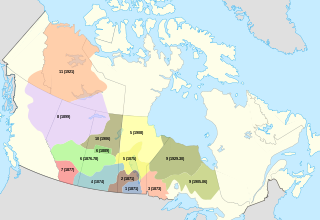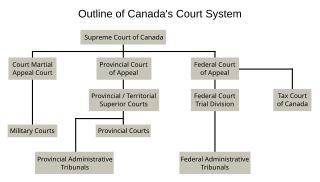| R v Van der Peet | |
|---|---|
 | |
| Hearing: November 27, 28, 29, 1995 Judgment: August 21, 1996 | |
| Full case name | Dorothy Marie Van der Peet v Her Majesty The Queen |
| Citations | [1996] 2 S.C.R. 507 |
| Docket No. | 23803 |
| Ruling | Van der Peet appeal dismissed |
| Court Membership | |
| Chief Justice: Antonio Lamer Puisne Justices: Gérard La Forest, Claire L'Heureux-Dubé, John Sopinka, Charles Gonthier, Peter Cory, Beverley McLachlin, Frank Iacobucci, John C. Major | |
| Reasons given | |
| Majority | Lamer C.J., joined by La Forest, Sopinka, Gonthier, Cory, Iacobucci and Major JJ. |
| Dissent | L'Heureux-Dubé J. |
| Dissent | McLachlin J. |
| Laws Applied | |
| R. v. Sparrow , [1990] 1 S.C.R. 1075 | |
R v Van der Peet, [1996] 2 S.C.R. 507 is a leading case on Aboriginal rights under section 35 of the Constitution Act, 1982. The Supreme Court held that Aboriginal fishing rights did not extend to commercial selling of fish. From this case came the Van der Peet test for determining if an Aboriginal right exists. This is the first of three cases known as the Van der Peet trilogy which included R v NTC Smokehouse Ltd and R v Gladstone .
The Constitution Act, 1982 is a part of the Constitution of Canada. The Act was introduced as part of Canada's process of patriating the constitution, introducing several amendments to the British North America Act, 1867, including re-naming it the Constitution Act, 1867.. In addition to patriating the Constitution, the Constitution Act, 1982 enacted the Canadian Charter of Rights and Freedoms; guaranteed rights of the Aboriginal peoples of Canada; provided for future constitutional conferences; and set out the procedures for amending the Constitution in the future.

The Supreme Court of Canada is the highest court of Canada, the final court of appeals in the Canadian justice system. The court grants permission to between 40 and 75 litigants each year to appeal decisions rendered by provincial, territorial and federal appellate courts. Its decisions are the ultimate expression and application of Canadian law and binding upon all lower courts of Canada, except to the extent that they are overridden or otherwise made ineffective by an Act of Parliament or the Act of a provincial legislative assembly pursuant to section 33 of the Canadian Charter of Rights and Freedoms.

R v Gladstone, [1996] 2 S.C.R. 723 is a leading Supreme Court of Canada decision on non-treaty Aboriginal rights under section 35 of the Constitution Act, 1982. The Court modified the Sparrow test for the extinguishment of Aboriginal rights to give more deference to the government in protecting commercial fishing rights.
Contents
On September 11, 1987, Steven and Charles Jimmy caught sockeye salmon near Chilliwack. The men were both holders of valid native food fish licenses, so the fish were legally caught, but they were forbidden from selling the fish. Charles Jimmy brought the fish to his common-law partner, Dorothy Van der Peet, a member of the Stó:lō Nation, and she cleaned the fish and set them on ice. Van der Peet was visited by Marie Lugsdin, a non-Indigenous person, who offered to purchase ten fish at $5 a piece, for a total of $50. Van der Peet agreed and was later charged, under British Columbia Fishery Regulations, with having unlawfully sold fish caught under a food (only) fish license. [1] [2]

Chilliwack is the 7th largest agglomeration in British Columbia, Canada. Historically an agricultural community, most of its 101,512 residents are now city-dwellers. Chilliwack is the seat of the Fraser Valley Regional District and its second largest city. This city is surrounded by mountains and recreational areas such as Cultus Lake and Chilliwack Lake Provincial Parks. It is located 102 kilometres southeast of Vancouver. There are many outdoor activities in the area, including hiking, horseback riding, archery, biking, camping, fishing, and golf.
At trial, the judge held that the Aboriginal right to fish for food and ceremonial purposes did not extend to the right to sell fish commercially. A summary appeal judge overturned the verdict, but it was subsequently overturned at the British Columbia Court of Appeal.

The British Columbia Court of Appeal (BCCA) is the highest appellate court in the province of British Columbia, Canada. It was established in 1910 following the 1907 Court of Appeal Act.
The issue before the Court was whether the law preventing sale of the fish infringed Van der Peet's Aboriginal rights under section 35.



